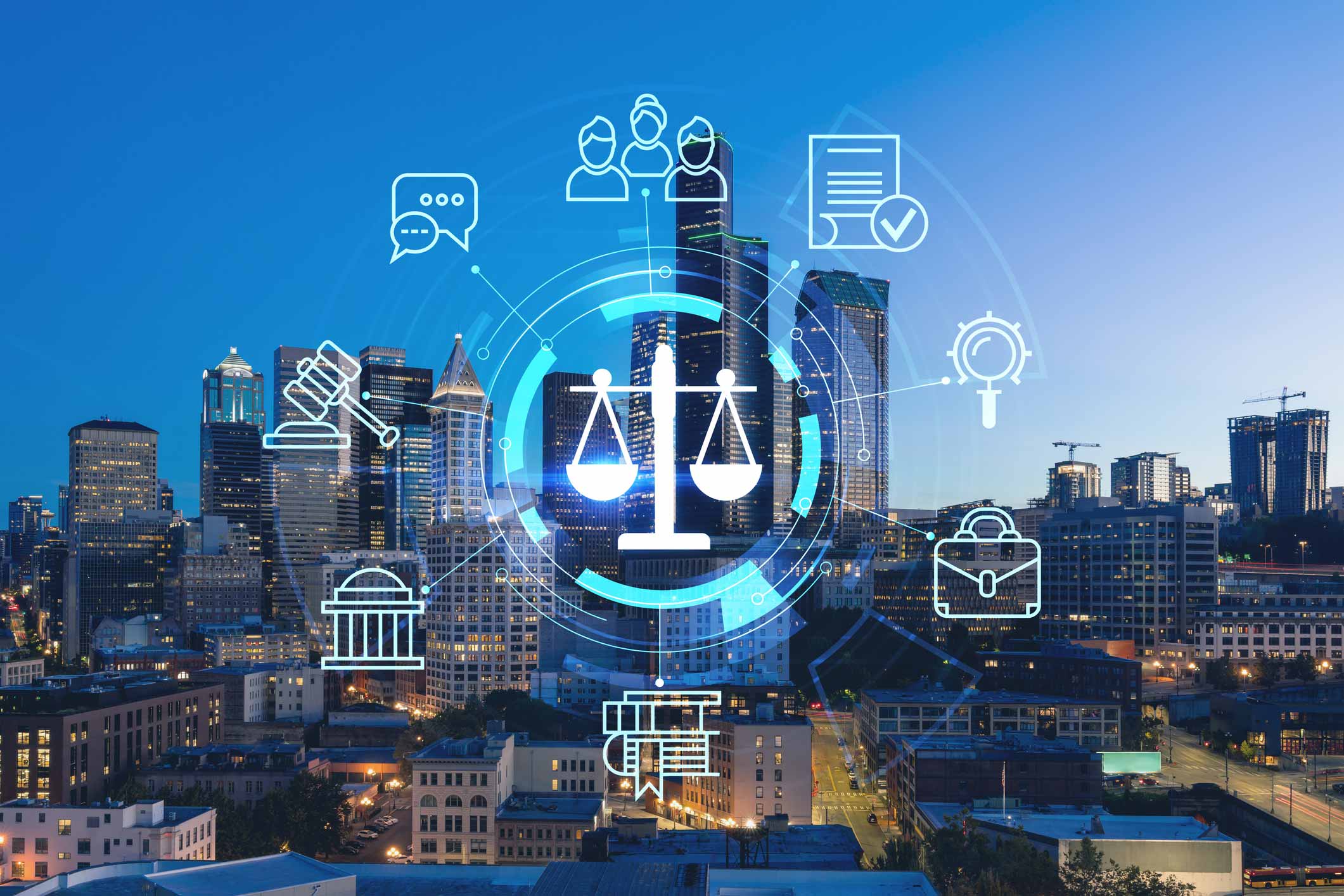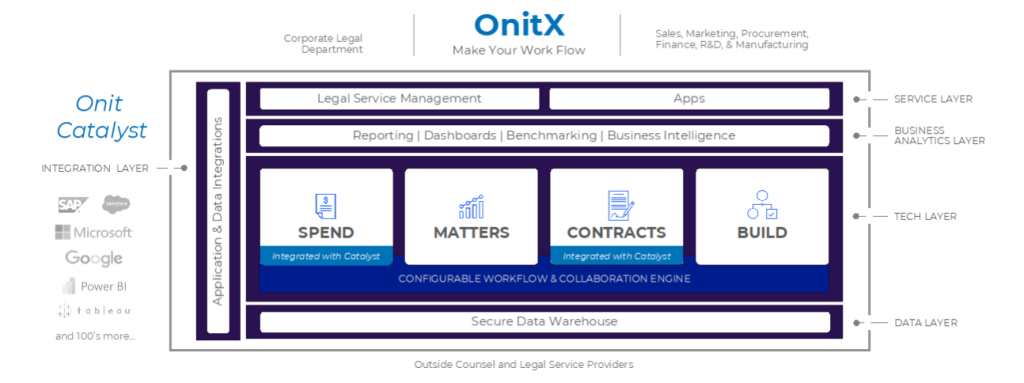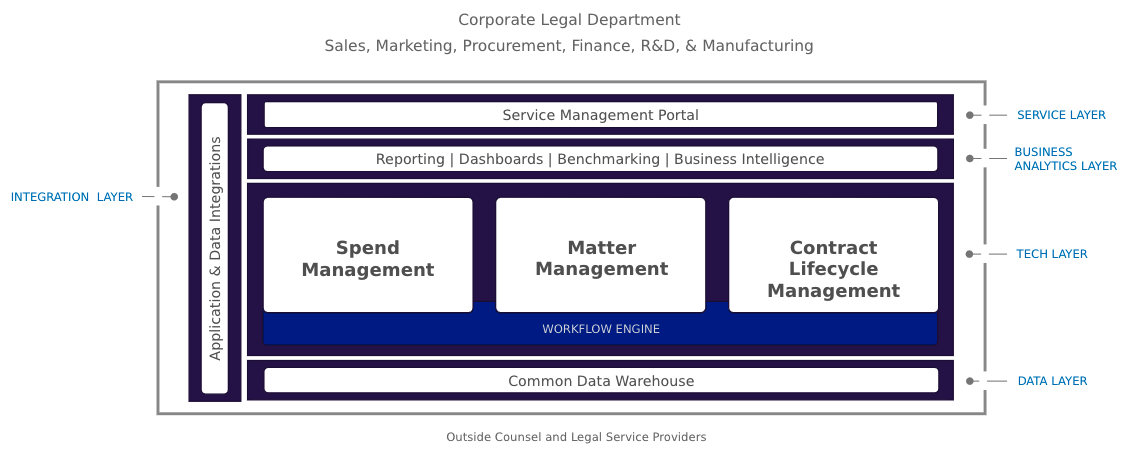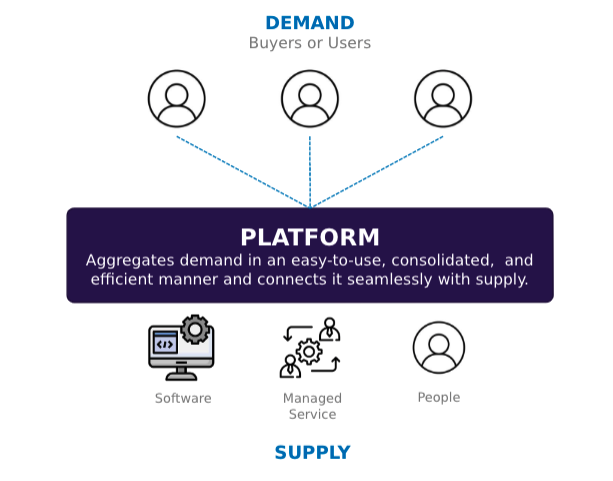
DIE ENTWICKLUNG VON LEGAL SPEND MANAGEMENT SOFTWARE IM LETZTEN JAHRZENT
Wie in Teil 1 beschrieben, gab es in den 90er und 00er Jahren viele Hindernisse, die den Legal e-Billing Trend hemmten. Nachdem viele dieser großen logistischen Hindernisse durch Gesetzesänderungen und Softwareentwicklungen überwunden wurden, haben in den letzten zehn Jahren immer mehr Rechtsabteilungen ihren Kanzleien den Einsatz von e-Billing vorgeschrieben, damit sie ihre Ausgaben besser verwalten, genaue Budgets aufstellen und strategische Entscheidungen über die Ressourcenverteilung treffen können.
Ein weiterer Treiber für diese Entwicklung ist der Wandel des Rechtsmarktes im Allgemeinen, der den Druck auf die Rechtsabteilungen erhöht, ihre Ausgaben aktiv zu senken oder zumindest den Nutzen ihrer Ausgaben nachzuweisen. Da die Rechtsabteilung eine wichtige Rolle für den Schutz des Unternehmens einnimmt, wurden früher alle Kosten als notwendig erachtet. Diese Einstellung hat sich allmählich geändert, und wie von allen Abteilungen eines Unternehmens wird auch von der Rechtsabteilung erwartet, dass sie erfolgreicher und effizienter arbeitet – daher die Investitionszunahme in Legal Operation Software. Legal Spend Management Software und der Prozess des e-Billings sind für die Verwaltung und Kontrolle der Rechtskosten unerlässlich. Obwohl eine Softwareanschaffung mit Kosten verbunden ist, macht sie sich (in der Regel) durch die Einsparungen, die sie der Abteilung ermöglicht, mehr als bezahlt. Herkömmliche, On-Premise Lösungen waren jedoch für alle außer den größten Unternehmensabteilungen unerschwinglich und konnten nur dann einen positiven ROI erzielen, wenn die Rechtsausgaben sehr hoch waren. Obwohl den internen Teams die Vorteile bewusst waren, konnten sie die Investition nicht rechtfertigen.
Dies verhinderte das Wachstum von Legal e-Billing. Mit dem Aufkommen cloudbasierter SaaS-Lösungen sanken jedoch die Softwarekosten, wodurch Legal Spend Management für mehr Unternehmensteams zugänglich wurde und die Einführung von e-Billing auf dem gesamten Markt beschleunigt wurde. Das Hinzukommen neuer Anbieter auf dem Markt führte zu einem Wettbewerbselement, das eine schnellere Verbesserung der für die Rechtsabteilungen der Unternehmen und ihre Kanzleien verfügbaren Funktionen ermöglichte. Zusätzliche Funktionen bedeuten, dass die potenziellen Vorteile der Software im Vergleich zu vor 10 oder 5 Jahren erheblich verbessert wurden, und das zu niedrigeren Kosten!
Die Nachfrage der Rechtsabteilungen nach e-Billing-Software führte dazu, dass die meisten Kanzleien keine andere Wahl hatten, als umfänglich automatisierte e-Billing-Systeme einzuführen (oder sich der manuellen Bearbeitung zu stellen…), was bedeutet, dass e-Billing in vielen Kanzleien jetzt vollständig in die normalen Abrechnungsroutinen integriert ist. Dadurch sind weniger manuelle Eingriffe erforderlich und die mit e-Billing verbundenen Kosten niedriger. Im Idealfall werden in diesen Kanzleien die erfassten Zeiten, Codes, Tarife, Zeitnehmer und Spesen bereits zu einem früheren Zeitpunkt im Abrechnungsprozess validiert. Außerdem wird die Generierung von e-Rechnungen in das Zeit- und Abrechnungssystem der Kanzlei integriert und es wird geprüft, ob die Abrechnungsregeln des Mandanten eingehalten werden, bevor die Rechnung fertiggestellt wird. Entsprechende Anwaltskanzleien haben klar definierte Prozesse für das Onboarding neuer e-Billing-Mandanten und Unterstützung für elektronische Rechnungen in den Systemen für die Mandanten-/Matter-Annahme sowie für die Zeiterfassung. Gleichzeitig sind ihre Anwälte, Sekretäre und Back-Office-Mitarbeiter mit den Anforderungen und Prozessen für e-Billing vertraut. Sie sehen die strategischen Vorteile der Software genauso wie ihre Kollegen in den Unternehmen.
Es sind jedoch nicht unbedingt die großen, weltweit tätigen Anwaltskanzleien, die bei e-Billing-Software eine Vorreiterrolle spielen. Im Vereinigten Königreich haben auch mehrere kleinere Kanzleien erfolgreich e-Billing eingeführt. Da sich die Unternehmen von den traditionellen Gruppen globaler Anwaltskanzleien abwenden und sich zunehmend auf kleinere oder Nischenkanzleien verlassen, mussten diese e-Billing einführen, um wettbewerbsfähig zu bleiben. Der wichtigste Erfolgsfaktor, der diese Kanzleien auszeichnet, ist ihre Fähigkeit, e-Billing in ihre normalen Geschäftsabläufe zu integrieren. Dafür haben diese ihre internen Prozesse geändert, haben ihr gesamtes Personal darin geschult, was erforderlich ist, damit die elektronische Rechnungsstellung funktioniert, und haben wichtige Änderungen an ihren Systemen vorgenommen, um die technischen Anforderungen zu erfüllen.
Sie sind nun in der Lage, ihren Kunden auf kostengünstige und effiziente Weise elektronische Rechnungen zu übermitteln, mit einem deutlich geringeren Anteil an Rechnungsfehlern, und teilen nun die Vorteile der e-Billing-Software mit ihren Kunden.
NEUESTE LEGAL E-BILLING TRENDS
Auch wenn noch nicht jede Rechtsabteilung oder -kanzlei Legal e-Billing einsetzt, so treibt doch die Tatsache, dass bereits zumindest ein großer Teil von ihnen seit mehr als einem Jahrzehnt e-Billing einsetzt, bedeutende Entwicklungen in der Branche voran. Start-ups und Entwicklungen bei bestehenden Anbietern bedeuten, dass einige dieser Innovationen bereits möglich sind, auch wenn sie in der gesamten Branche noch nicht zur Normalität geworden sind. Auf dem Weg ins Jahr 2020 werden wir in den kommenden Jahren Entwicklungen und neueste e-Billing Trends in folgenden Bereichen sehen.
- KOLLABORATION
Nachdem die grundlegenden Prozesse geklärt sind, geht es nun darum, diese Prozesse zu optimieren und sie kollaborativer zu gestalten. Die Anbieter investieren in verbesserte Schnittstellen zwischen Kanzlei- und Unternehmenssystemen, um die Erfahrungen der Kanzleien zu verbessern (deren e-Billing-Interface, im Vergleich zu dem der internen Rechtsabteilungen, in der Regel unterdurchschnittlich ist). Genauso wie, um eine flexiblere oder gleichmäßigere Verteilung von Verwaltungs- und Einrichtungsaufgaben zwischen Kanzleien und internen Rechtabteilungen zu ermöglichen, um die softwareinterne Kommunikation und Zusammenarbeit zu verbessern, und um mehr Prozesse zu automatisieren und den manuellen Aufwand zu verringern. - WORK IN PROGRESS (WIP) TRACKING
Bei der herkömmlichen elektronischen Rechnungsstellung sieht der Kunde die Informationen erst in der Phase der Rechnungsstellung, wenn es zu spät ist, problematische Einträge anzufechten. Trotz der Zunahme von Festpreisvereinbarungen ist die Abrechnung auf Stundenbasis nach wie vor üblich und die interne Rechtsabteilung benötigt zunehmend einen aktuellen Überblick über die Kosten der Angelegenheit (Matter) und den Personalbedarf. Interessanterweise verfügen viele Kanzleisysteme bereits über detaillierte Echtzeitinformationen zu live Matter und können diese „auf Knopfdruck“ abrufen. Bei den Systemen, die dies nicht tun, ermöglichen Tools wie BusyLamp den Kunden, ihre Kanzleien aufzufordern, WIP zu übermitteln. Auf diese Weise kann die interne Rechtsabteilung diese Informationen rechtzeitig einsehen, überprüfen und abfragen und so Überraschungen und schwierige Gespräche vermeiden, wenn die Rechnung eintrifft, und so eine bessere und vertrauensvollere Beziehung aufbauen. Diese Transparenz ist auch für beide Parteien nützlich, um den Wert von Festpreisvereinbarungen zu validieren.
AKTUELLE LEGAL E-BILLING ENTWICKLUNGEN
2008 – 2010
NACH DER BANKENKRISE
Viele Projekte, darunter auch e-Billing wurden auf dem Tiefpunkt der Wirtschaftskrise auf Eis gelegt. Heute wird die elektronische Rechnungsstellung von Finanzinstituten genutzt, um die Einhaltung von Vorschriften zu gewährleisten und Kosten zu verwalten.
2011
AUFSCHWUNG VON SAAS
Durch die Entwicklung webbasierter IT-Lösungen ist die Installation von Software nicht mehr erforderlich. Heute führen die meisten e-Billing-Anbieter Cloud-Lösungen an, die kostengünstiger und weniger komplex sind.
2013
E-BILLING NEUGRÜNDUNGEN
Neue Anbieter wie BusyLamp kommen auf den Markt und bieten zusätzliche Produkte mit mehr Funktionen, verbesserten Features, neueren Technologien und höherer Benutzerfreundlichkeit an. Viele der „traditionellen“ e-Billing-Anbieter haben in großem Umfang konsolidiert und fusioniert – damit hat sich die Landschaft des globalen e-Billing grundlegend verändert.
2015
EINFÜHRUNG VON E-BILLING TECHNOLOGIE IN UK GERICHTEN
In Zivilrechtliche Gerichtsverfahren im Vereinten Königreich verabschiedet man sich von Papierrechnungen und führt die elektronische Rechnungsstellung bei den Gerichten ein.
2016
KÜNSTLICHE INTELLIGENZ (KI)
Im Legal e-Billing findet Künstliche Intelligenz in Bereichen wie Rechnungsprüfung, Texterkennung und Reporting zunehmend Anwendung.
2017
CORPORATE LEGAL OPERATIONS
Das Aufkommen von Inhouse Legal Operations Departments hat den Anforderungen der Rechtsteams eine neue Dimension verliehen. Ein breiteres Spektrum von IT-Anwendungen wird nun von Unternehmensjuristen genutzt, wodurch e-Billing „best of breed“ sein muss, um in diesem Portfolio von Legal Tech Systemen akzeptiert zu werden.
- AUSLAGERUNG AN DIENSTLEISTER
Da interne Rechtsabteilungen bestrebt sind, noch mehr ROI aus ihren Legal Spend Management-Lösungen zu erzielen und die Kosten für geringwertige Arbeit zu senken, werden wir eine zunehmende Auslagerung des Rechnungsprüfungsprozesses an Anbieter und Rechtsdienstleister beobachten, so dass interne Rechtsberater und ihre externen Anwälte mehr Zeit für die juristische Arbeit aufwenden können. - KÜNSTLICHE INTELLIGENZ (KI)
Fortschritte im Bereich der KI und insbesondere des Machine Learnings werden es ermöglichen, dass noch mehr Prozesse des e-Billings und des Matter Managements automatisiert werden können. Dies und andere Verbesserungen bei der Automatisierung werden dazu führen, dass Legal e-Billing stärker in das tägliche Casemanagement, die Zeiterfassung und die Abrechnungsprozesse einer Kanzlei integriert wird und zur „normalen“ Art der Rechnungsstellung mit geringeren Kosten wird. KI ist jedoch keine Zauberformel, denn für deren Einsatz ist ein erhebliches Volumen an qualitativ hochwertigen Daten erforderlich. - INTEGRATION
Eines der ständigen Probleme im Zusammenhang mit Legal e-Billing ist die Frage, wie verschiedene Softwaresysteme miteinander kommunizieren können, was dadurch erschwert wird, dass sich die Kanzleien in unterschiedlichen Entwicklungsstadien befinden und/oder mehrere Systeme verwenden. Die großen internationalen Kanzleien haben nach wie vor die Nase vorn und haben viel in globale Rechnungs- und Managementinformationssysteme investiert. Derzeit wird an der Definition eines Standard-Set von Softwaretools gearbeitet, die eine direkte Schnittstelle zwischen dem Zeit- und Abrechnungssystem der Anwaltskanzlei und dem bevorzugten e-Billing-System des Kunden ermöglichen. Vereinfacht ausgedrückt könnte dadurch die Notwendigkeit entfallen, eine eigenständige Datei mit Rechnungen und anderen Rechtsdaten zu erstellen und diese dann manuell in eine Application eines e-Billing-Anbieters hochzuladen. - PLATTFORMLÖSUNGEN
Kombinierte Lösungen für die Matter- und Spend-Management sind weit verbreitet, und einige unterstützen auch die Integration mit Anwendungen für das Vertrags- oder Dokumentenmanagement. Der Trend geht in Richtung einer einzigen Plattform für die Verwaltung des gesamten Lebenszyklus der juristischen Arbeit, um zu vermeiden, dass man sich bei mehreren Systemen anmelden muss, um die tägliche Arbeit zu erledigen. Legal Spend Management-Lösungen werden auch weiterhin über den Prozess des e-Billings hinausgehen und Sourcing/RFP, WIP, Reporting, Panel-Review, Tarifvergleiche und andere Funktionen, die über die elektronische Rechnungsstellung hinausgehen, umfassen, wie sie in Tools wie BusyLamp eBilling.Space zu finden sind.
Aus dem englischen Original-Blog übersetzt.












